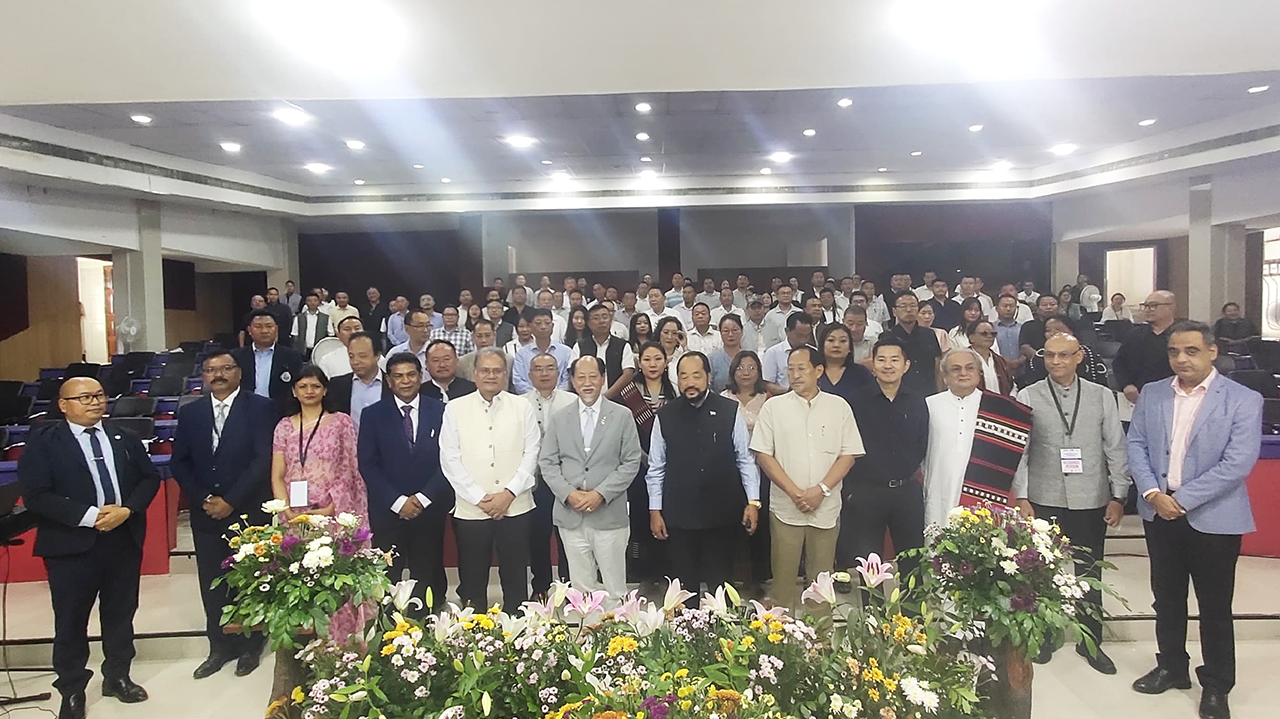In a bid to fortify disaster resilience across Nagaland’s urban centres, a special training on Urban and Local Resilience for elected Urban Local Body (ULB) members was organised by the Nagaland State Disaster Management Authority (NSDMA), Home Department, in collaboration with the United Nations Office for Disaster Risk Reduction (UNDRR), International Institute of Safety & Security Management (ISSM), and the Urban Development & Municipal Affairs Department.
Nagaland Chief Minister Neiphiu Rio, who inaugurated the programme underscored the ULBs’ pivotal role in shaping Nagaland’s resilience against climate-induced disasters.
He said the Government has arranged this training to enhance the elected ULB members understanding of disaster risk reduction and disaster risk management and to enhance their capacity to shield people from nature’s fury.
“As elected guardians of every Naga town, you are now Nagaland’s first line of defence,” said Dr Rio, calling on ULB members to transform from administrators to protectors of public safety and urban sustainability.
Citing recent calamities such as the Pherima cloudburst and landslides that destroyed properties and caused loss of lives, the Chief Minister also highlighted monsoon floods in Dimapur, Chumoukedima and Niuland which affected lives and livelihoods.
“This cannot be our future,” he stated emphatically, urging elected representatives to “stand where policy meets survival”. He said their signatures on permits would decide if structures collapse or communities thrive.
Highlighting the recurring cost of neglecting fragile land during every monsoon, Rio stated that an elected member’s signature on a building permit can save a family, and their vigilance can prevent many man-made disasters.
Speaking on the importance of building bye-laws and the authority of Urban Local Bodies (ULBs) to enforce life-saving regulations, Rio emphasized that ULBs hold the key to ensuring safe construction practices in urban areas.
“It is time that Nagaland’s urban towns rise with the wisdom of Disaster Risk Reduction (DRR) to protect lives and properties,” he urged, stressing the critical role of proactive planning and regulation in mitigating disaster risks.
Download Nagaland Tribune app on Google Play

He emphasized the enforcement of Zone V earthquake standards, stating that no structure in Kohima or Nagaland’s hill towns should bypass building safety norms. In flood-prone Dimapur, he recommended raised plinths, stormwater drains, and immediate action against illegal encroachments on riverbanks and hillsides.
“A building permit is now a covenant of safety,” Rio said, adding that ULBs must embrace zero-compromise enforcement—including issuing stop-work orders for non-compliance and demolish structures on landslide-prone slopes or flood channels.
On monsoon preparedness, Rio highlighted that the Urban Local Bodies (ULBs) in Nagaland (Town Councils and Municipalities) play a critical role in monsoon preparedness to mitigate flooding, landslides, waterborne diseases, and infrastructure damage. He emphasized on some of the key responsibilities and typical preparedness activities which the ULBs can play like Pre-Monsoon Planning & Coordination , Review & Activation of Plans , Resource Inventory , Critical Infrastructure Maintenance .
Rio also mentioned that drainage system management in Nagaland is a top priority.
On Risk Reduction & Mitigation, he highlighted that identifying and marking landslide-prone slopes especially near settlements and roads should be done in coordination with Geology & Mining or NSDMA.
While elaborating on public awareness & communication, Rio said that disseminating warnings by communicating weather warnings (from IMD/NSDMA) and flood alerts to communities through public announcements, SMS alerts (if system exists), social media, and local leaders must be done or community sensitization like conducting awareness campaigns on keeping drains clear, recognizing landslide warning signs, safe practices during heavy rain/floods, location of shelters and emergency contacts.
While speaking about geotechnical investigations, Rio urged the members not to approve a project without soil test. He said ULB-led scrutiny should begin in every town in the state. “Mandate geotechnical reports for all building permits especially in landslide-prone zones (e.g., NH-29 corridor),” he said.
“Geo-Technical report is absolutely essential before any infrastructure development (homes, roads, bridges) in Nagaland due to its complex, young, and unstable geology,” he added.
“When you clear a drain, you save a shopkeeper’s livelihood. When you enforce bylaws, you protect a child’s future,” he said, adding this training would enable the ULBs to understand the meaning of resilience and transform them from administrators to guardians of Naga lives.
He also urged them to mobilize their khels and colonies/wards and make Nagaland India’s model of mountain resilience stated.
“Monsoon preparedness in every town in Nagaland is an ongoing battle requiring sustained effort, investment, and collaboration between ULBs, State agencies, and the local communities,” he added.
Earlier during the program, Preparation of Departmental Disaster Management Plans ( DDMPs) for State of Nagaland was launched by Chief Minister Dr Neiphiu Rio. Speeches were also delivered by Advisor, NSDMA and NRE, Z. Nyusietho Nyuthe, Advisor, Urban Development and Municipal Affairs, Zhaleo Rio and Sanjaya Bhatia, Head of Office Incheon UN Office for Disaster Risk Reduction (UNDRR) . Welcome address was delivered by Anoop Khinchi, IAS , Home Commissioner and a. Brief Introduction of the Program was delivered by Dr. Johnny Ruangmei , Joint Chief Executive Officer, NSDMA.

